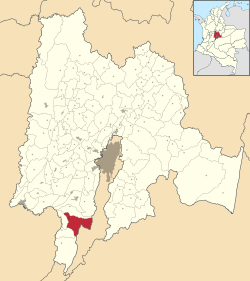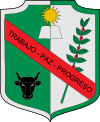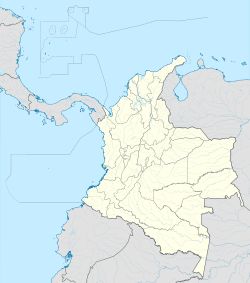San Bernardo, Cundinamarca facts for kids
Quick facts for kids
San Bernardo
|
|||
|---|---|---|---|
|
Municipality and town
|
|||
|
|||

Location of the municipality and town inside Cundinamarca Department of Colombia
|
|||
| Country | |||
| Department | |||
| Elevation | 1,600 m (5,200 ft) | ||
| Population
(Census 2018)
|
|||
| • Total | 7,417 | ||
| Time zone | UTC-5 (Colombia Standard Time) | ||
San Bernardo is a town and municipality in Colombia. It is located in the Cundinamarca department, about 99 kilometers (62 miles) from Bogotá. This area is known for its rich farmland and different climates, which make it great for growing crops. The main products are high-quality blackberry and pea.
Because San Bernardo is in the Andes Mountains, its weather is shaped by how high up it is and the winds from the Páramo Sumapaz. This means some parts of the town get cool, especially at night. Other higher areas have a mild climate.
Contents
History of San Bernardo
San Bernardo was officially started on July 22, 1910. On that day, Father Mazo held a special Mass. He announced that the town was named in honor of the Archbishop of Bogotá, Bernardo Herrera Restrepo. Father Mazo believed that San Bernardo was blessed on this founding day.
The bells for the town's first chapel were a gift from General Charles J. Heredia. Miguel Mena was the first mayor of San Bernardo. The town's church was officially made a parish by Archbishop Ismael Perdomo on January 29, 1932.
The Mummies of San Bernardo
San Bernardo is famous for its natural mummies, which are kept in a special building at the local cemetery. In the mid-1950s, the cemetery had to be moved because of severe floods. During this move, hundreds of mummified bodies were found at the old cemetery site.
How the Mummies Formed
It is not fully clear why the bodies buried in San Bernardo's cemetery turned into mummies. Many local people used to think that eating a lot of local fruits, like the chayote (called guatila there), caused the bodies to mummify. However, scientists have shown that this is likely not true. They point out that even the clothes on the bodies are preserved, which a special diet would not explain.
Scientists now believe that the mummification is most likely due to the unique climate and the high altitude of the town's cemetery. The cemetery's caretakers say that the bodies are not treated or embalmed in any way before burial.
Scientific Explanation
The main reason for the mummification is thought to be the dry microclimate inside the tombs. The bodies are buried with clothes, which help protect them from fly larvae. The only insects that usually get into the tombs come from burial flowers. The dry air inside the tomb then dries out the bodies, preserving them naturally.
Forensic specialists have noted that the mummies often have arched backs. This is a common feature seen in mummies from very dry climates around the world. About 14 mummies are displayed in the mausoleum. Most of them are almost completely preserved, with their skin, hair, and even their clothes still intact.
Places to Visit and Events
San Bernardo has several interesting places and events:
- Fairs and Festivals: These lively events usually happen at the end of June and in early July.
- Cerro Paquilo: A hill that offers great views of the surrounding area.
- Natural Caves: Explore the natural caves found in the region.
- Piedra del Sol: This is a special rock located in the "El Carmen" area. It has ancient drawings called petroglyphs made by indigenous people long ago.
- The Lajas: Another interesting natural site.
- Mirador of Portones: A viewpoint where you can enjoy scenic landscapes.
See also
 In Spanish: San Bernardo (Cundinamarca) para niños
In Spanish: San Bernardo (Cundinamarca) para niños




